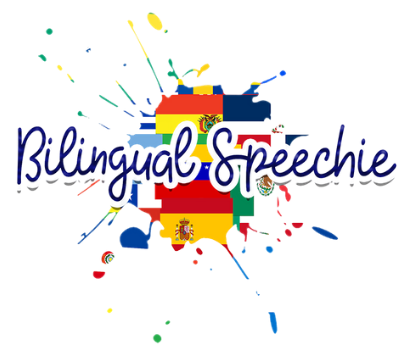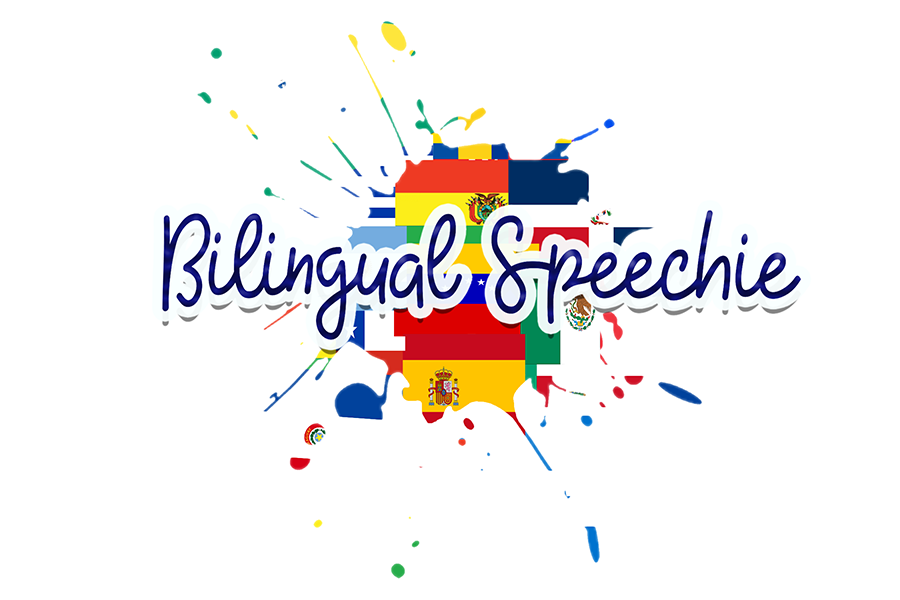por Liliana Diaz diciembre 14, 2023
Do you have a bilingual AAC user on your caseload? Perhaps you have been receiving questions from the student's family and/or teacher on whether the student should have both languages present on their AAC system, and you're not quite sure where to find resources? Well you came to the right spot because here are some facts that all educators, families and SLPs should know about when working with bilingual AAC users.
Plain and simple, ALL bilingual AAC users should ALWAYS have access to both languages on their AAC systems, and here's why:
Everyone, including bilingual AAC users, have the right to communicate in the language(s) they want, like and prefer. Verbal bilinguals can pick and choose which language they want to communicate in at any point in time, and bilingual AAC users should have that option as well. Communication and one's home language are interconnected and they are an essential piece of one's identity. When restricting a student from their home language, you are taking more away than just his/her language, you are taking a piece of who they are as a person.
Bilingual AAC users have the right to be successful in all environments and with all communication partners, including with their family IN THEIR HOME language. In order for our students to be successful with their communication systems, they must be able to communicate in a variety of environments. Our students spend a large majority of their time at home with their family. It is essential that their family are a part of the language learning process otherwise factors such as family buy-in to use the system, the carry-over of goals, motivation to use the AAC system, the exposure to rich language models, and all interactions are all hindered.
Bilingual AAC users have the right to code-switch whenever they deem necessary. Code-switching and code-mixing is a key component and natural process in bilinguals. Bilingual AAC users should be allowed the opportunity to naturally code-switch, gain access and learn new vocabulary in their home language and access both linguistic repertoires at any given point in time.
Communication impairment should never be a reason why an individual who experiences complex communication needs becomes marginalized. Unfortunately many people with disabilities, who also come from culturally and linguistically diverse backgrounds, are often deprived of bilingual supports, dual language learning, and access to their home language for a variety of reasons. One reason is often due to the perceived severity of their disability, as well as the belief that adding another language to their mental capacity is beyond their learning load; however, this is a completely incorrect way of thinking, and research has proved otherwise. Bilingual people with a variety of disabilities, including communication impairments, are capable of becoming bilingual, speaking two languages and/or learning another language.
With forced monolingualism come many harmful consequences. Depriving bilingual AAC users of the opportunity to learn and use both languages is harmful to their language learning, culture and family dynamic. Oftentimes, I have seen families lose complete communication at home due to language loss. In addition, language and culture are also interconnected and as a result, depriving them of their home language puts the AAC user at risk of losing their cultural identity.
Here are some resources/references that you can read to learn more about this topic and help you advocate for your student/client:
McNamara, E. (2018). Bilingualism, Augmentative and Alternative Communication, and Equity: Making a Case for People With Complex Communication Needs. Perspectives of the ASHA Special Interest Groups, 3(12), 138-145. https://doi.org/10.1044/persp3.SIG12.138
Soto, G. (2018). Introduction to the Special Issue on Cultural and Linguistic Diversity and AAC. Perspectives of the ASHA Special Interest Groups, 3(12), 136-137. https://doi.org/10.1044/2018_PERS-SIG12-2018-0013
Soto, G. (2012).Training Partners in AAC in Culturally Diverse Families. Perspectives of the ASHA Special Interest Groups, 21(4), 144-150. https://doi.org/10.1044/aac21.4.144
Chabon, S., Esparza-Brown, J., Gildersleeve-Neumann, C. (2010). Ethics, Equity, and English-Language Learners: A Decision-Making Framework. The ASHA Leader, 15(9). https://doi.org/10.1044/leader.FTR1.15092010.10
Los comentarios se aprobarán antes de mostrarse.
por Liliana Diaz julio 23, 2023
Have a client on your caseload that is demonstrating difficulty producing the CH sound? Perhaps you're a parent whose child is in speech therapy working on the CH sound? The CH sound can be a tricky sound to teach because it's hard to visually see what's going on inside the mouth when saying the sound. But no worries, here are some tips to help achieve that tricky CH sound.
por Liliana Diaz febrero 13, 2023 1 Comentario
por Liliana Diaz enero 12, 2023
Perhaps you recently got assigned to a new school or site that consists of a large bilingual and/or multilingual caseload, and perhaps you're not bilingual. Not speaking the student's language can be quite overwhelming and stressful (trust me, I've been there!). I know the feeling of not quite knowing where to start in intervention, or not knowing how to support your students. Well luckily, bilingual SLP, Ingrid Owens-Gonzalez has some important tips to share with all SLPs. Here are 3 things Monolingual SLPs can do to support bilingual populations today.

¡Bienvenidos! ¡Soy Bilingual Speechie y este es mi blog de logopedia! ¡Aquí encontrará recursos y actividades bilingües (inglés y español) para la terapia del habla y lenguaje! ¡Estoy aquí para hacerles la vida más fácil!
Mi nombre es Liliana Díaz-Vázquez y obtuve mi licenciatura en trastornos de la comunicación en 2012 y mi maestría en patología del habla y lenguaje en la Universidad Saint Xavier en 2014.
Soy patóloga del habla y lenguaje bilingüe certificada (SLP) y actualmente trabajo en Chicago, Illinois. ¡Me apasiona trabajar con la población bilingüe! Me especializo en pediatría con niños de edades 1 a 18 años y principalmente trabajo con estudiantes bilingües y hispanohablantes en programas de educación general, programas preescolares y programas de educación especial.
Actualmente trabajo a tiempo completo en las escuelas públicas y a tiempo parcial en intervención temprana. También tengo mi propio blog y creo todo tipo de recursos / actividades bilingües que utilizo con mis propios clientes. Tengo una amplia experiencia en el tratamiento y la evaluación de una variedad de trastornos. He trabajado con niños con autismo, síndrome de Down, deficiencias cognitivas, discapacidades de aprendizaje, apraxia, trastornos de fluidez, trastornos del lenguaje y retrasos en el desarrollo.
Mis áreas de especialización incluyen comunicación aumentativa / alternativa (CAA), desarrollo del lenguaje bilingüe y la evaluación y tratamiento de retrasos / trastornos del lenguaje en niños bilingües.
Soy miembro de la American Speech-Language and Hearing Association (ASHA) desde el 2014, miembro de la Illinois Speech and Hearing Association (ISHA) desde el 2014 y tengo mi licencia en el estado de Illinois.
Además de trabajar con familias y niños, ¡soy un "foodie" de medio tiempo! ¡Sígueme en las redes sociales para ver todas mis aventuras gastronómicas en Chicago!
 Español
es
Español
es
 English
en
English
en
 Español
es
Español
es


Liliana Diaz
Autor